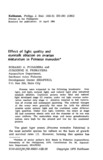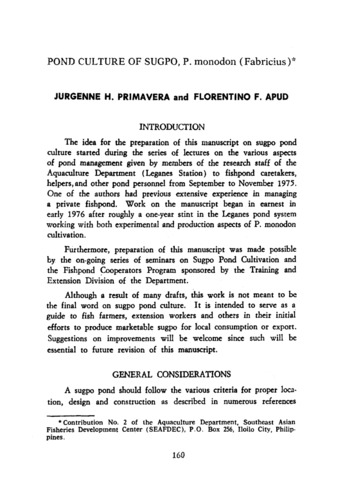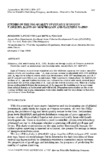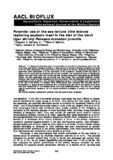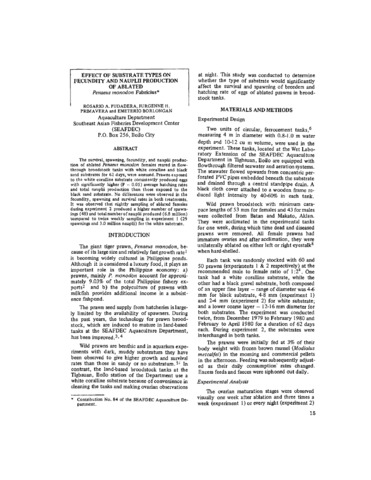Search
Now showing items 1-10 of 179
Mass production in concrete tanks of sugpo Penaeus monodon Fabricius spawners by eyestalk ablation
(Fisheries Research Society of the Philippines, 1978)
Two batches of 196 and 181 P. monodon females were ablated on one eyestalk in March and July 1977, respectively, and a control batch of 180 unablated females was stocked in July 1977. The females were stocked with males ...
Effect of light quality and eyestalk ablation on ovarian maturation in Penaeus monodon
Prawns were subjected to the following treatments: blue light, red light, natural light, and natural light plus unilateral eyestalk ablation. Unablated prawns under blue and natural light developed stage III ovaries; under ...
Pond culture of sugpo, P. monodon (Fabricius)
(BFAR, 1976)
A resume is presented of the practical considerations involved in establishing a sugpo pond culture operation, as a guide to fish farmers, extension workers and others interested in producing marketable sugpo in the ...
Intensive prawn farming in the Philippines: ecological, social, and economic implications
(Springer Verlag, 1991)
The benefits of intensive farming of the giant tiger prawn Penaeus monodon in the Philippines are discussed in relation to the environmental costs. Ecological effects include mangrove conversion into ponds; use of antibiotics ...
Studies on the egg quality of Penaeus monodon Fabricius, based on morphology and hatching rates
(Elsevier, 1981)
Eggs of Penaeus monodon are classified into five different types on the basis of morphological criteria and hatching rates — A1 eggs undergo normal development with 58% hatching rate; A2 eggs show delayed and/or abnormal ...
Artificial substratum consisting of poly-β-hydroxybutyrate-based biodegradable plastic improved the survival and overall performance of postlarval tiger shrimp Penaeus monodon
(Wiley, 2019)
The use of artificial substratum consisting of poly‐β‐hydroxybutyrate (PHB)‐based biodegradable plastic for penaeid shrimp culture was investigated in the present study. The survival of postlarval tiger shrimp Penaeus ...
Ovarian rematuration of ablated sugpo prawn Penaeus monodon Fabricius
(Institut National de la Recherche Agronomique, 1978)
Spent Penaeus monodon females were tagged around one eyestalk with numbered brass tags, stocked in a concrete tank with males, and periodically examined for ovarian rematuration over a six-month period (February to August, ...
Potential use of the sea lettuce Ulva lactuca replacing soybean meal in the diet of the black tiger shrimp Penaeus monodon juvenile
(Bioflux, 2015)
To evaluate the biological value of incorporating the sea lettuce Ulva lactuca meal in the diet of the black tiger shrimp (Penaeus monodon), 3 diets were fed to groups of shrimps containing two levels (15% and 30% replacement ...
Effects of different sex ratios on maturation, fecundity and hatching rates of ablated Penaeus monodon wild stock
(Fisheries Research Society of the Philippines, 1980)
The minimum number of males per female that would still ensure high maturation, fecundity and hatching rates in Penaeus monodon broodstock, is determined. Wild stock P. monodon were stocked in 4 m diameter circular tanks ...
Effect of substrate types on fecundity and nauplii production of ablated Penaeus monodon Fabricius
(Science and Technology Information Institute, Department of Science and Technology, 1980)
The survival, spawning, fecundity, and nauplii production of ablated Penaeus monodon females reared in flow-through broodstock tanks with white coralline and black sand substrates for 62 days, were assessed. Prawns exposed ...



